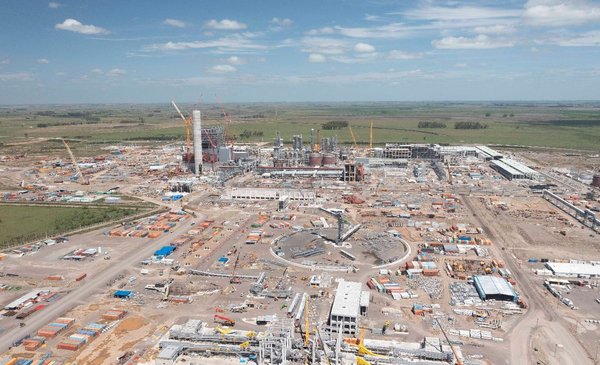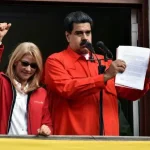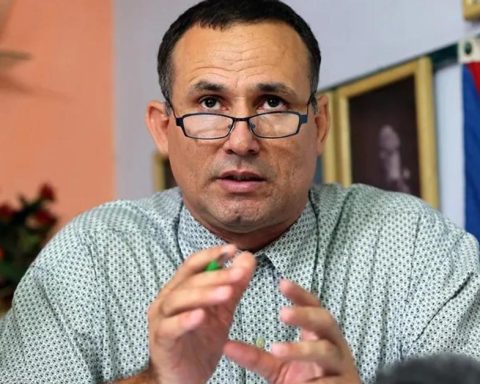A peak occupancy of 6,500 people directly, the contribution of 1 point of GDP to the growth of the economy in 2021, the
US$ 8 million of salaries that are paid per month to Uruguayan workers or the 600 thousand kg of food that they distributed in their dining rooms, are some of the dazzling figures that surround the UPM II project in Paso de Toros, who enters the final stage but also already thinks about the day after.
The stage that will generate the greatest economic impact, in the company’s opinion, will be after the work is finished, whengenerate 10,000 permanent jobs. Some 4,000 will depend directly on UPM and another 6,000 in different tasks that will surround the entire pulp mill industrial complex. The Finnish multinational has already trained its first workers at its “university” in Fray Bentos and next month a nursery will be inaugurated that will provide jobs for 120 people in the town of Sarandí del Yí (Durazno), most of them women.
In dialogue with The Observer Two UPM executives in Uruguay discussed the progress of the project, praised the response of the Uruguayan companies and assured that the “most important spill” of the project will occur when the chimney is lit in the course of the first quarter of next year and that a part that path is already being traveled.
“We are going to have the identity card of 4,000 people and know their first and last name,” says Matías Martínez, Communications Manager at UPM in Uruguay. The company maintains the date of entry into production of the plant in the first quarter of 2023, after a rescheduling forced by the pandemic and global logistical problems that delayed the initial plan, which foresaw its completion by the end of this year.
Courtesy Upm
The company is already hiring workers for the operation of the plant in Paso de los Toros.
“UPM’s operation is a quieter thing, but it generates an impact equal to or greater than construction. The big difference is the permanence of employment and that it becomes strong deep inside”, said Gonzalo Giambruno, director of Business Development at UPM.
When the mill begins to operate, there will be 1,000 workers who will enter the plant directly every day and will enter 500 trucks a day all year round with wood to feed this industrial giant. This entire chain will involve 4,000 jobs, distributed in different locations in the interior, 24 hours a day, and every day of the year.
“We cannot be looking at the price of pulp to decide whether to work or not. The plans are for 5 or 10 years, and all of this is transferred to the communities of the interior”, highlighted Giambruno.
The other 6,000 jobs that UPM II will generate —once it is operational— will be linked to different links in the entire chain: from nurseries, plantations, harvesting and transportation. The factory will have its last step with logistics and the transfer of pulp and supplies by train through the Central Railroad (which is being built) and the specialized pulp terminal that the port of Montevideo will have, a work that will be completed this year.
First steps
One of these examples will occur shortly with the start-up of a nursery in Sarandí del Yí of UPM Forestal Oriental where 120 people will work directly, after carrying out a training process through an agreement with the UTU. Those thousands of eucalyptus seedlings that will come out of that nursery will return in the form of logs to be transformed into cellulose paste in about 10 years at Paso de los Toros.
In parallel, UPM has open calls to hire personnel in different parts of the country such as road supervisors, administrative for Tacuarembó, Paysandú, Durazno and Río Negro to build up its staff.
“It is the silent operation that has been growing and that from 2023 we will see it very strongly,” Giambruno remarked.
The company has already selected the first two groups of plant technicians, who will be the future operators in the different control rooms of the pulp mill in Paso de los Toros. Martínez indicated that the selection of these workers was made with “young people from the interior”, some of whom have already completed their first year of training in Fray Bentos.
While, there is a second team of operators from UPM II, who will be arriving in Paso de los Toros in the coming weeks to begin “experience” what will be the start-up of the plant during the first quarter of 2023.
What’s more, shortly, the multinational will issue a third labor call for plant operators. This process involves about 100 people. “Before there was no know how in Uruguay. Today the best university we have is Fray Bentos”, said Giambruno. This helps to generate local capacities, since before foreigners were required to attend to this task.
The work and its numbers
UPM’s work was structured around three main pillars: the civil works of all the buildings, the mechanical assembly and its equipment, and the assembly of electro-instrumentation. According to Giambruno, the first part is “well advanced” and in its “final phase”, the second stage is at its “peak of intensity”, while the third is just taking its first steps.
Currently 6,500 people are working at the plant and 83% of the hours worked within the construction site correspond to Uruguayan labor, well above the 35% mandated by the regulations for the free zone regime. Since work began, more than 15,000 workers have passed through the project, including the plant, the specialized pulp terminal in the port of Montevideo and the temporary accommodation works in Durazno, Carlos Reyles, Pueblo Centenario and Paso de los Bulls.
Monthly Some US$ 8 million are allocated to the payment of wages received by Uruguayan workers engaged in construction and assembly works (supervisors and professionals are not included). The workers receive additional benefits that are about $19,000 above what is awarded in the Salary Councils. “These are figures that, for the most part, remain in the area of influence of the plant and have repercussions on consumption in those localities,” said Martínez. Today the chimney of UPM II in Paso de los Toros is not lit but there are new shops, barracks, services and gastronomy establishments in surrounding areas that are operating thanks to this new pole of industrial activity in the center of the country.

Courtesy Upm
The project will generate 10,000 new jobs between direct and indirect personnel.
On the other hand, Giambruno indicated that a substantial change with respect to the first project of the UPM I plant in Fray Bentos was that there was a “strong commitment to national labor”, where the company generated a general framework to encourage that objective.
For this, an “open book” model was used for the development of the work, which aimed to “exploit” the work in different types of contracts so that national companies “can compete” and tolerate risks according to their back. . “This allowed us to make a quantitative leap in the number of Uruguayan companies that participated compared to the two previous projects for the construction of the pulp mills,” said Giambruno.
With a supplier development program, it was sought to identify small and medium-sized companies with the potential to join as a UPM contractor in both the construction and operation of the plant. This plan was worked on jointly with the Ministry of Industry, OPP and ANDE. Last week the second phase was launched and companies from different sectors were selected. One such example occurred with the firm specializing in metal-mechanical engineering Volfer for the construction of residential moduleswhich today are used by the pulp mill workers.
Meanwhile, in the assembly phase in Paso de los Toros, there are suppliers that were previously subcontracted by other foreign companies that are now directly linked to UPM. For example, the electrical assembly work will be 100% carried out by Uruguayan firms and with local labor.
The company does not consider that this change in strategy —of appealing to the local component— has generated extra union tension, and assures that the delays in the execution of the project are due to the impact of the global pandemic and international logistical restrictions.
“There were effects due to union measures but we were able to absorb them without problems. This is to the credit of the construction industry and its workers who rose to the occasion. There has been a qualitative change in these years with respect to the project that was carried out 15 years ago in Fray Bentos”, concluded Giambruno.
















